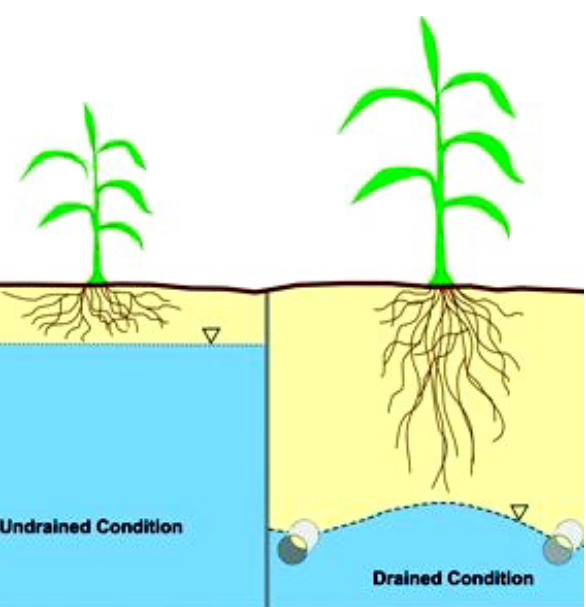by Liza Lemieux, Franklin County NRCD Conservation Technician
Tile drainage can have many benefits. By more quickly draining extra water from a field, the field can be accessed sooner for planting, crop roots can grow farther down, compaction is reduced, and soil moisture is more often optimal for crop growth. These soil health improvements are key for maintaining productivity in the face of more frequent, intense precipitation and droughts we’ve been seeing in this region.
Unfortunately, because the drained water is flowing out of a pipe which often discharges directly into a stream or ditch, tile drainage also has potential to be a source of pollution. Tobetter understand the impact of tile drainage on our streams, rivers, lakes, and ponds, some of the Vermont Conservation Districts and UVM Extension staff are participating in a three-year study of tile drainage, commissioned by the Vermont Agency of Agriculture Food & Markets.
We have just completed our first year of sampling tile outlets, representing a variety of crops, fertilization methods, tillage systems, soil types, soil phosphorus levels, field slopes, and lengths of tile line. Every other week, samplers go out to their tile outlet sites and collect water samples to be analyzed for total and dissolved phosphorus, total nitrogen, turbidity (a measure of the “cloudiness” of water), and an estimate of the amount of water flowing from the outlet at that point in time. While the statewide data has yet to be compiled so we don’t have any formal results to share, simply looking at when we did and did not collect samples begins to tell a story about tile drainage.
Beginning in December 2017, most of the tile outlets we sample were flowing regularly throughout the winter and into spring, with some very high flows during warmer periods. As the summer carried on, each of the outlets ran slower and slower, most drying up around June and all finally trickling to a stop by mid-September. After some fall rain and an early snow, in late November 2018 all our outlets were running. This information about seasonal fluctuations in tile outlet flow can help us to pinpoint when we might need to be worried about pollution, especially when it is paired with nutrient levels. With a year of data, we can begin to establish a baseline and identify patterns. However; even just the variability in our flow results highlights the complexity of tile drainage systems and emphasizes the importance of
continuing to study these outlets in order to fully understand their impacts on agricultural fields and the greater environment.
Because recent legislation bans installation of new surface inlets, the study is looking to add sites with existing surface inlets to better understand their impact. If you’d be willing to include your tile outlet in the study (sites are anonymous!) please contact the District.







